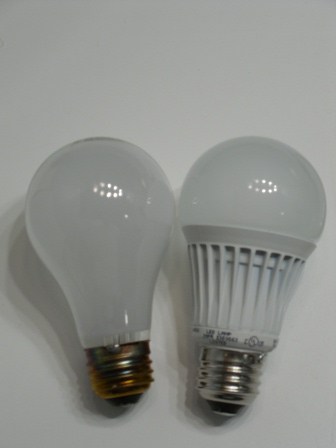
The development of the incandescent light bulb was one of the most revolutionary inventions of the 19th Century. And yet, in the present, this lighting source does not hold up to modern competition. Light Emitting Diode (LED) lights are the newcomers to the industry. And, though LED lights are still more expensive than the traditional incandescent lights, in nearly every way, they prove the superior choice.
Construction
Although LED light bulbs and incandescent light bulbs fulfill essentially the same purpose, their construction is significantly different. Incandescent light bulbs rely on old technology. A metal piece attaches to a filament. The glass bulb surrounds this apparatus, and encases either a vacuum or gas. Electricity (or turning on the light) causes the filament to glow. Incandescent light bulbs produce more light if they command more electricity. By comparison, LED light bulbs use a semiconductor to release that electricity as light.
Efficiency
When it comes to energy usage, LED light bulbs are far more efficient than the old incandescent bulbs. A good portion of this energy difference relates to heat. Incandescent and even Compact Fluorescent Lights (CFL) expend more energy producing heat than they do actual light. Since LED lights do not produce heat, they use less energy to create a similar amount of light. Where an incandescent bulb might require 100 watts or more to sufficiently illuminate a room, LED lights may be able to do the same using only 10 watts.
Safety
When you think about how hot light bulbs can get, you realize the benefit of the LED technology. Hot glass bulbs are a burn hazard, and they increase your risk of a house fire. LED lights do expend heat, but in infinitesimal quantities. This makes LED lights far preferable in several venues, including:
- closets
- wall sconces
- outdoor environments
Without worrying that you will burn your skin on a hot bulb, you can feel more comfortable providing your home with a wide variety of lighting options.
Longevity
The energy efficiency of LED lights translates into saving you a lot of hassle in the long run. Incandescent bulbs count their hours in the hundreds or low thousands, meaning you must replace them every year or so. LED lights measure output in the tens of thousands. As a result, you may use an LED bulb for many years before you need to buy a new one.
Expense
It is true that LED lights are generally more expensive than incandescent bulbs. LED is relatively new technology, so the initial outset costs will be higher as lighting companies produce new bulbs and fixtures to meet demand. But, even though incandescent bulbs are cheap, they are on their way out. Many manufacturers no longer produce the less-efficient bulbs, which makes replacements harder to find. With the variety of LED options and the efficient energy usage, LED lights and fixtures make for a wise long-term investment.
Incandescent bulbs were the best way to light a home for well over a century. But now, there is an option that saves money and time, reduces your risk of fire or burns, decreases your energy usage and increases the longevity of your purchases. With these benefits, LED lights may prove to be an invention that will remain the gold standard of lighting for decades to come.